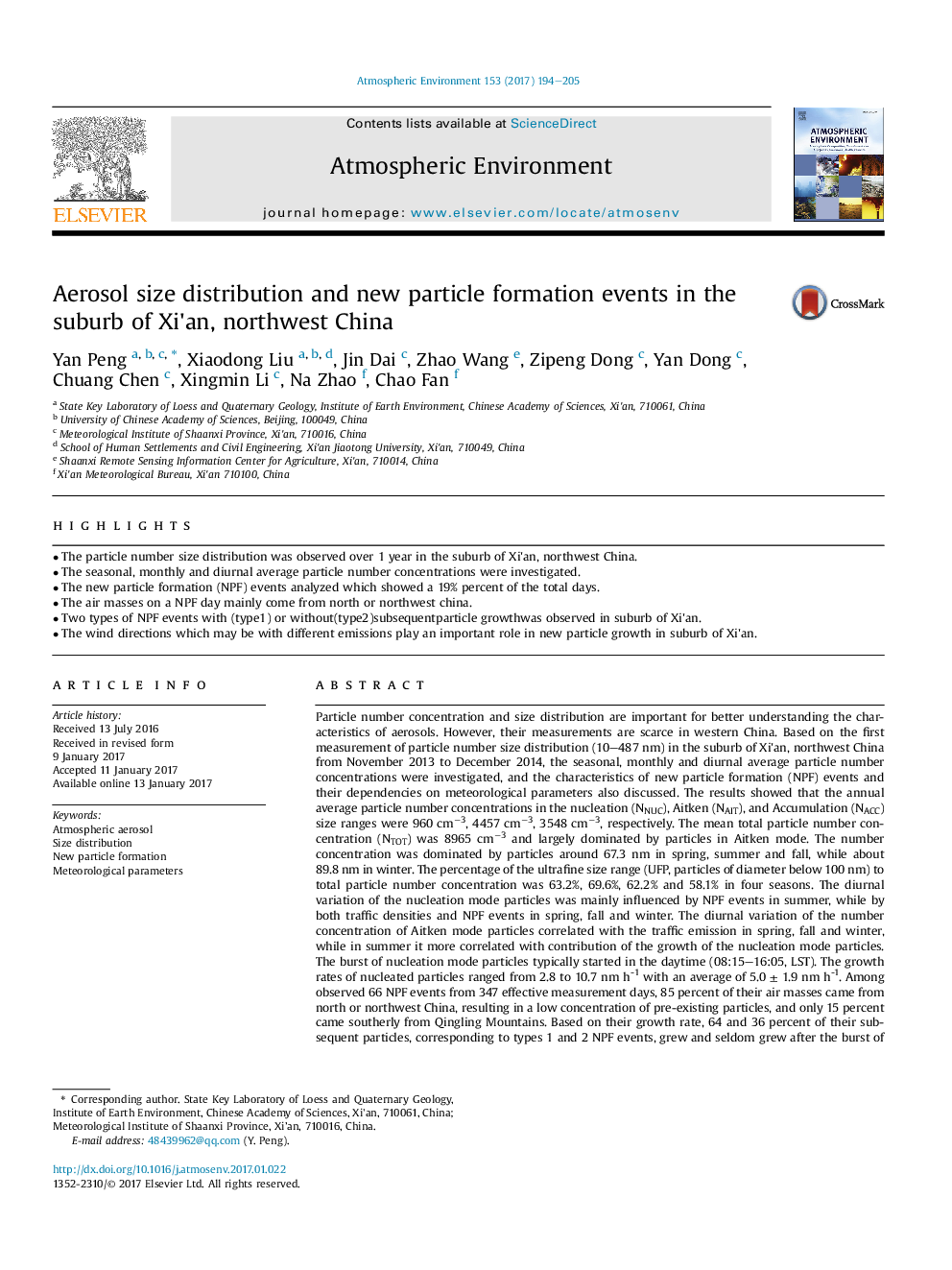| کد مقاله | کد نشریه | سال انتشار | مقاله انگلیسی | نسخه تمام متن |
|---|---|---|---|---|
| 5753016 | 1620321 | 2017 | 12 صفحه PDF | دانلود رایگان |
- The particle number size distribution was observed over 1 year in the suburb of Xi'an, northwest China.
- The seasonal, monthly and diurnal average particle number concentrations were investigated.
- The new particle formation (NPF) events analyzed which showed a 19% percent of the total days.
- The air masses on a NPF day mainly come from north or northwest china.
- Two types of NPF events with (type1) or without(type2)subsequentparticle growthwas observed in suburb of Xi'an.
- The wind directions which may be with different emissions play an important role in new particle growth in suburb of Xi'an.
Particle number concentration and size distribution are important for better understanding the characteristics of aerosols. However, their measurements are scarce in western China. Based on the first measurement of particle number size distribution (10-487 nm) in the suburb of Xi'an, northwest China from November 2013 to December 2014, the seasonal, monthly and diurnal average particle number concentrations were investigated, and the characteristics of new particle formation (NPF) events and their dependencies on meteorological parameters also discussed. The results showed that the annual average particle number concentrations in the nucleation (NNUC), Aitken (NAIT), and Accumulation (NACC) size ranges were 960 cmâ3, 4457 cmâ3, 3548 cmâ3, respectively. The mean total particle number concentration (NTOT) was 8965 cmâ3 and largely dominated by particles in Aitken mode. The number concentration was dominated by particles around 67.3 nm in spring, summer and fall, while about 89.8 nm in winter. The percentage of the ultrafine size range (UFP, particles of diameter below 100 nm) to total particle number concentration was 63.2%, 69.6%, 62.2% and 58.1% in four seasons. The diurnal variation of the nucleation mode particles was mainly influenced by NPF events in summer, while by both traffic densities and NPF events in spring, fall and winter. The diurnal variation of the number concentration of Aitken mode particles correlated with the traffic emission in spring, fall and winter, while in summer it more correlated with contribution of the growth of the nucleation mode particles. The burst of nucleation mode particles typically started in the daytime (08:15-16:05, LST). The growth rates of nucleated particles ranged from 2.8 to 10.7 nm h-1 with an average of 5.0 ± 1.9 nm h-1. Among observed 66 NPF events from 347 effective measurement days, 85 percent of their air masses came from north or northwest China, resulting in a low concentration of pre-existing particles, and only 15 percent came southerly from Qingling Mountains. Based on their growth rate, 64 and 36 percent of their subsequent particles, corresponding to types 1 and 2 NPF events, grew and seldom grew after the burst of nucleation mode particles. For type 1 NPF event, the nucleated particles could grow up to 40 nm or larger when surface winds shifted from westerly to easterly or southeasterly (from village areas). For type 2 NPF events, the particles kept almost unchanged when the winds stayed westerly. This implied that the surface wind direction with different emissions might play an important role in new particle growth in suburb of Xi'an.
Journal: Atmospheric Environment - Volume 153, March 2017, Pages 194-205
